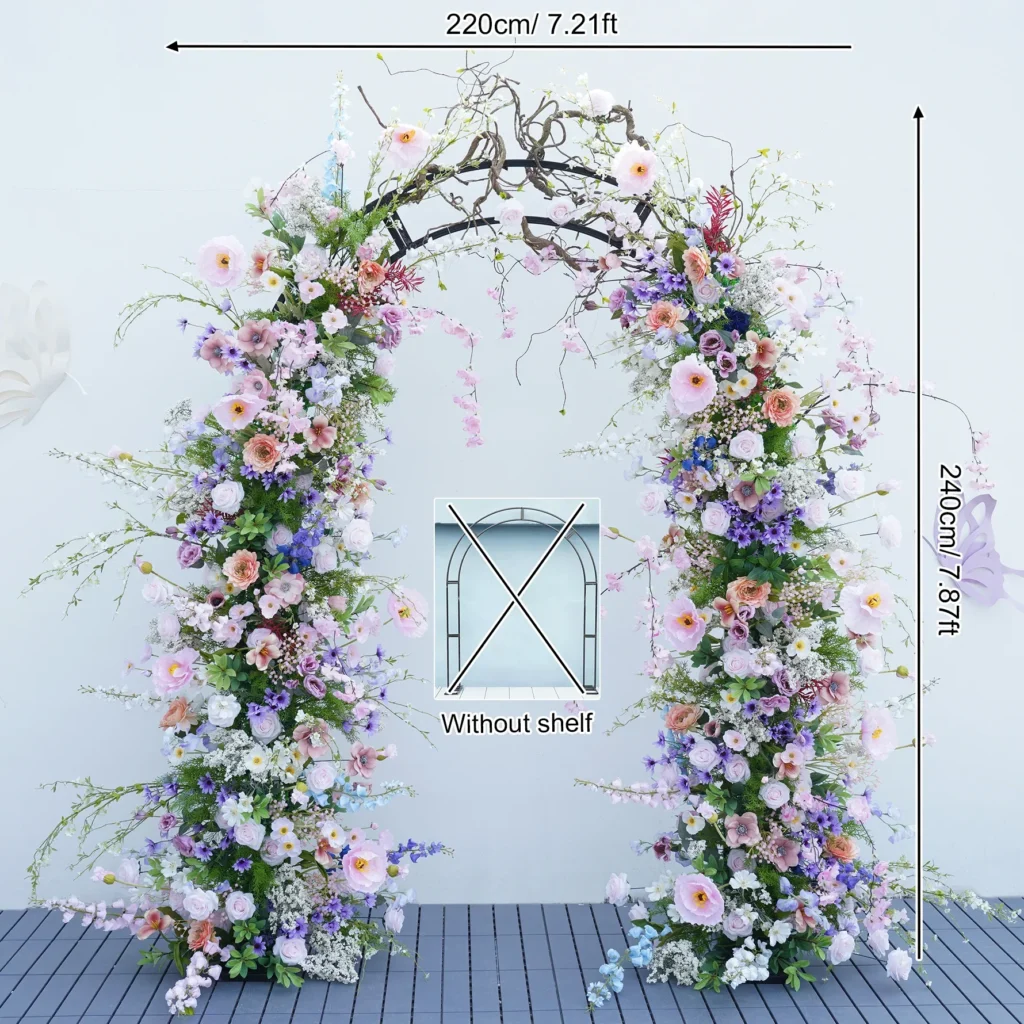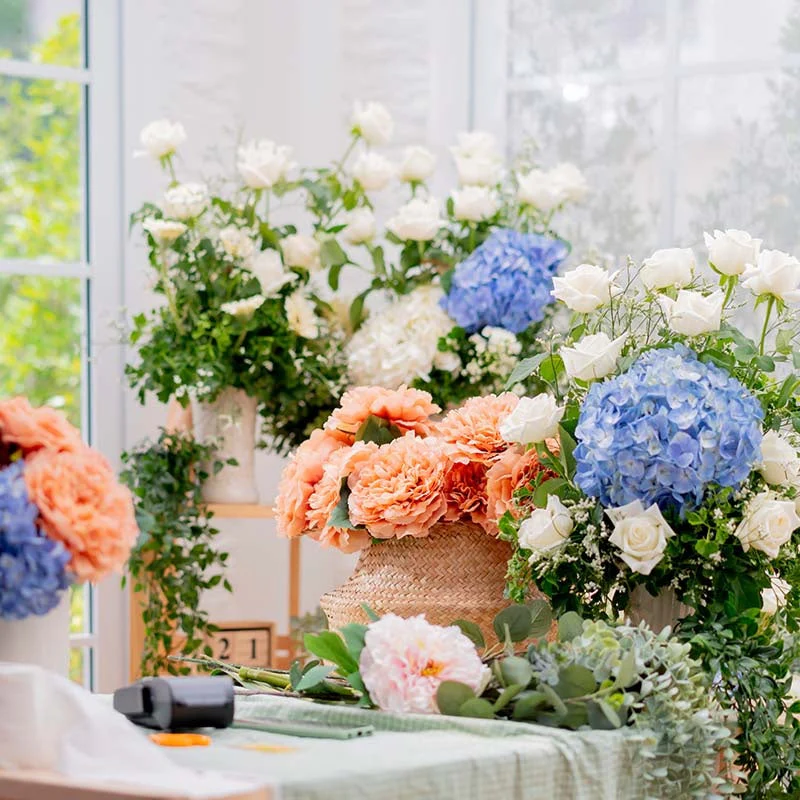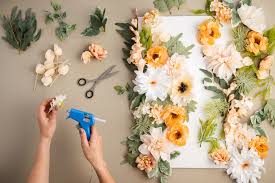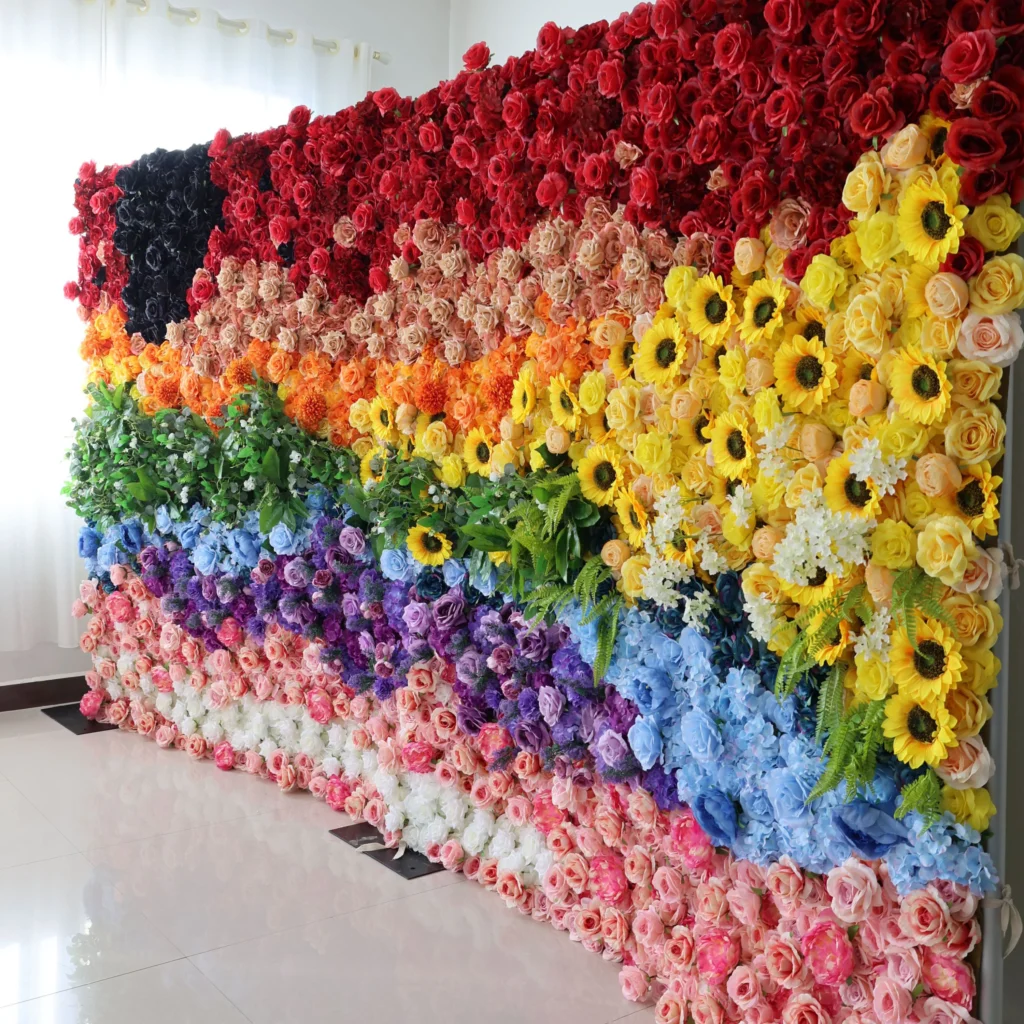How to Create a Stunning Artificial Flower Wall with Faux Blooms?
Artificial flower wall designs offer a striking, low-maintenance centerpiece for weddings, retail stores, and interior spaces. From elevating photo backdrops to enhancing brand aesthetics, these walls combine durability with visual charm.
An artificial flower wall1 is easy to customize, long-lasting, and reusable—making it the perfect choice for events, photo backdrops, or permanent interior installations.

Learn more about how professional wedding planners use artificial flower walls to elevate their venue decor.
How to Plan an Artificial Flower Wall Layout?
Before you touch a single flower, take the time to design your layout. A well-planned structure ensures the final wall looks balanced, secure, and stunning from every angle.
Start by measuring your space and sketching a simple grid to guide placement. Map out zones for focal flowers, fillers, and accents before installing.

One of our commercial partners, a wedding decorator in Arizona, faced the challenge of building a 3-meter backdrop for a desert-themed venue. We began by mapping the wall into 30cm x 30cm blocks, allowing us to pre-count the flower requirements and test visual flow before assembly.
This grid approach made it easier for her team to set up quickly and accurately, with no gaps or last-minute design fixes.
To see how top-tier planners apply artificial flower wall designs, check out this external guide on wedding flower walls.
Want more layout inspiration? Explore Martha Stewart’s wedding flower wall ideas for upscale backdrops.
For detailed setup tips, read our own guide on arranging faux flowers like a florist.
Also, don’t miss our expert picks on top artificial flowers for corsages.
By using this method, even large-scale floral walls become manageable. It also allows for modular construction—so you can pre-assemble panels, transport them safely, and connect on-site like puzzle pieces.
Whether for indoor walls or pop-up outdoor events, layout planning saves time, cost, and post-installation corrections.
Which Artificial Flowers Work Best for an Artificial Flower Wall?
Not all artificial flowers are created equal when it comes to feature walls. Visual volume, stem weight, and texture all affect how they perform on vertical displays.
Choose full, sturdy faux blooms like hydrangeas, peonies, roses, and ranunculus. These flowers create a dense, photogenic surface without gaps or wilting.

For inspiration on popular materials used in event backdrops, explore Martha Stewart’s wedding flower wall gallery.
Last year, a boutique hotel in London wanted a four-season floral wall at their entryway. We recommended silk roses, hydrangeas, and preserved-look eucalyptus to ensure year-round appeal. These flowers retained their form, didn’t shed, and were easy to clean—perfect for high-traffic areas.
If you want a more exotic or bohemian style, faux orchids, palm leaves, or sunflowers can be mixed in. The key is balance: heavy flowers near the base for visual anchor, lighter ones at the top for a soft fade. For nighttime events, metallic-tinted florals or LED-wired faux branches create extra depth and glow.
Stay away from foam or paper-based flowers in wall installations. They don’t hold shape well under lighting or heat, and any moisture exposure can ruin the look. High-quality silk or latex-coated faux flowers are worth the investment.
How to Secure Flowers on an Artificial Flower Wall?
A beautiful wall means nothing if it collapses mid-event. The structure behind the flowers determines whether your installation is temporary, reusable, or permanent.
Use foam boards, wooden frames, or metal mesh as your base. Attach flowers with hot glue, zip ties, floral wire, or fastener clips depending on flower weight.

In one collaboration with an events agency in Toronto, we helped design a portable flower wall for trade shows. The solution? A lightweight PVC frame with an interlocking mesh grid. Each flower was wired onto the grid using reusable ties. The wall could be rolled up, transported in a van, and reassembled in under 40 minutes.
Glue guns are excellent for silk florals on foam panels—just avoid overheating, which can damage synthetic materials. If you’re working on a mesh or wire frame, floral wire allows repositioning during setup. For retail environments or permanent fixtures, consider screw-in anchors or magnetic clips hidden behind the base.
Always test your attachments before finalizing the install. Walk around the wall, touch-test for movement, and adjust any drooping areas. Once the structure holds firmly and evenly, you’re ready for styling.
Color Blocking Ideas for Artificial Flower Wall Design?
Visual depth on a flower wall comes from more than just the blooms—it’s about how color is used to guide the viewer’s eye. Strategic color blocking creates energy, movement, and cohesion.
Split your wall into zones of complementary or gradient tones. Use 60/30/10 ratios for base, secondary, and accent colors.

A recent client in Melbourne who manages pop-up retail stores wanted a modern floral wall that reflected their brand palette—sage, blush, and ivory. We structured the wall in a vertical ombré from green at the base to blush in the center and ivory on top. This created a soft, calming gradient that matched their product displays while acting as a selfie station for shoppers.
Patterns also make an impact. Spiral layouts, center medallions, or heart-shaped clusters turn static backdrops into storytelling pieces. Leave intentional gaps or use neutral blooms like white baby’s breath to separate bold color sections and avoid chaos.
Clients aiming for branded designs often request floral walls that incorporate their logos. We do this by plotting the shape on a clear grid and assigning color-coded flowers to create defined letters or icons. This technique is common in product launch events and showroom displays.
Real-Life Artificial Flower Wall Styling Examples?
From destination weddings to retail corners, artificial flower wall1s are used in more ways than most people imagine. Their durability and flexibility make them ideal across various industries.
Whether for photoshoots, reception backdrops, or permanent hospitality installations, artificial floral walls create lasting impressions with minimal upkeep.

One of our partners in Dubai used our wall panels for a luxury wedding hall. Their team installed a 6-meter-wide floral backdrop entirely made of faux magnolias and jasmine. It stayed intact for three consecutive wedding weekends without replacement. The bride’s family even ordered a smaller version as a keepsake.
Another example comes from a retail client in New York who created a seasonal wall for a Valentine’s campaign. They mixed red roses, black anemones, and golden leaves. The dramatic effect increased in-store photography and doubled their Instagram tags that month.
In interior design, I’ve also seen faux floral walls placed behind dining tables, at salon waiting areas, or around spa reception desks. The key to success is matching the floral tone to the interior color palette. Some even add scent diffusers near the base to mimic the sensory experience of real blooms.
Discover more practical applications of faux floral arrangements on our own blog: How to Arrange Faux Flowers Like a Professional Florist.
Looking for the perfect faux blooms? Don’t miss our in-depth guide: Top Artificial Flowers for Corsages: Best Picks for Weddings & Proms.
Artificial flower walls are not just trending—they’re evolving. In 2025, more venues are opting for custom backdrops that integrate faux blooms with brand visuals, seasonal palettes, and even scent diffusion systems. This shift is not limited to weddings; retail pop-ups, product launches, and influencer events are using flower walls as storytelling tools. By choosing durable, lightweight designs, businesses can reuse their investment across campaigns, making each installation more cost-efficient and visually powerful. As sustainability and visual impact go hand in hand, the artificial flower wall stands out as both a functional and aesthetic asset.
Conclusion
An artificial flower wall1 delivers style, practicality, and visual value for events and interiors—without the waste or constant upkeep of fresh flowers.
FAQ
Q1: Are artificial flower walls easy to install without professional help?
Yes, most can be set up with basic tools using pre-assembled panels or layout grids.
Q2: What flower types are best for commercial floral walls?
Hydrangeas, peonies, roses, and eucalyptus due to their fullness and durability.
Q3: Can you provide custom branding within the flower wall?
Absolutely. We design logos or icons using flower placement within the grid.
Q4: How long does it take to produce a custom flower wall?
7 to 14 business days depending on size and design complexity.
Q5: Will colors fade under direct sunlight?
We recommend UV-protected faux flowers for long-lasting color, even outdoors.
Q6: Are the panels reusable for multiple events?
Yes, all our walls are modular and designed for repeat use.
Q7: Do you offer installation support globally?
Yes. Our team supports setup guides and event coordination worldwide.
Q8: What’s the typical size of a flower wall
Q9: Can these flower walls be rented?
Yes, in selected regions. Please contact us to check availability.
